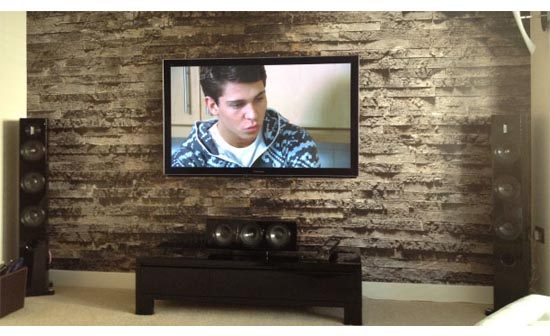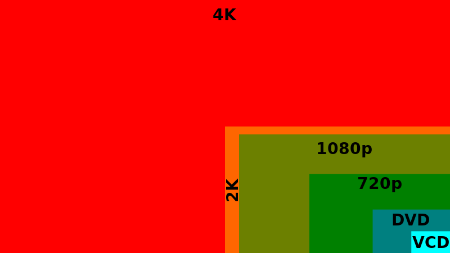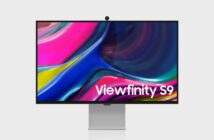Imagine where the state of home entertainment and cinemas were five years ago – the war was still raging between Blu Ray and HD-DVD, high definition sets were considered a luxury and not a standard, and cinema-esque home theatre setups were the preserve of wealthy early tech adopters only.
All of those things have drastically changes in just half a decade (Blu Ray won, people have HD TVs everywhere, and home theatres are insanely more affordable) – so where will the industry go from here? This post aims to put forward a few predictions.
1. On-Demand Streaming Dominating; Disk Spinning Dead
The rise of smart TVs, multi-media gaming consoles and streaming services like Netflix and Lovefilm have meant that many of us are ditching disks and switching to streaming instead. As it stands, not all worldwide speeds are quite widespread enough for streaming to completely dominate – but with the global average standing at 18.4 Mbps, and it only set to skyrocket over the next five years, completely digital content could be a reality.
Ted Schilowitz, co-founder of RED Digital Cinema, recently said in an interview: “[It’s] kind of a forgone conclusion in everyone’s mind that the idea of a spinning, deliverable disc has gone the way of the dinosaur. “The ability to download material and store and play it is a much more viable strategy.â€
In October 2013, Netflix reported that they had surpassed the 40 million mark in terms of active worldwide subscribers – proving a really substantial user-base for on-demand content. Google are already rolling out their insanely-fast 1Gbit internet in selected US states which makes fast downloading (and even streaming) of uncompressed HD content a viable reality. Which brings us on to the next prediction…
2. 4K Resolution (‘Ultra HD’) The Standard; 6K The ‘New Tech’
No sooner had 1080p HD content become a standard, with high-def TVs and Blu Ray player prices incredibly affordable, we all started hearing about how 4K (or ‘Ultra HD’ as it’s become known). Despite the ‘HD’ tag that’s been applied, 4K resolution is leaps and bounds ahead of 1080p in terms of pixel density and unrivalled pin-sharpness. Check out this comparison chart for an idea of the resolution difference between 4K and 1080p – it’s insane, right?
With a resolution of 3840×2160, outperforming 1080p and positively dwarfing 720p, it’s no surprise that this superb picture quality is the future – Netflix is planning to roll out its first bits of 4K content in the next few months. Initial sets, though, have been astronomically expensive – the first sets to go on sale in the UK were around the £15,000 mark, putting them out of reach of wealthy early adopters.
However, the prices are already plummeting – Sony are set to release more affordable sets, with a 55-inch version coming in at around the £4,000 mark. Within five years, these sets will almost certainly become more mainstream as prices continue to drop and content becomes available.
3. 3D or Not 3D? That Is The Question
3D has been the movie buzzword of the last five years – virtually all major Hollywood releases have released an eye-popping three dimensional iteration alongside the standard 2D version, but is this trend going to continue over the next five years?
Chances are, given the declining popularity in cinemas, the answer will be no – in June earlier this year, the BBC reported that UK box office earnings from 3D films had fallen to well under 20% of total revenue. It still sounds significant, but considering that 3D accounted for three-quarters of all box office takings just three years ago, it’s a steady fall to insignificance. 3D is a limiting format, requiring expensive kit and far more digital storage, as well as a fairly exclusionary and anti-social activity – if there aren’t enough glasses to go around at home, some people will miss out. As 3D declines, it seems TV manufacturers and filmmakers are pushing towards 4K instead of the elusive success of three dimensions.
So where does the future of home cinema lie? If current trends, technological advancements and industry predictions are anything to go by we’ll have a purely digital form of media without physical disks (downloads and/or streaming), 3D will finally be shown the door, and pin-sharp 4K ‘Ultra HD’ will be welcomed with open arms as TV and projector prices start to fall to affordable levels.
All while interacting seamlessly with our smartphones and tablets to provide a uniformed interface for controlling, digesting and talking about what we’re watching. If this is the future, you can count me in! If you need me, I’ll be out the back binning my 3D glasses.
–
This is a guest post written by Tom McShane – professional blogger, dedicated technology worshipper and writer for Colchester-based Andrews TV, who provide high-end home cinema installations throughout the Essex area.Â







